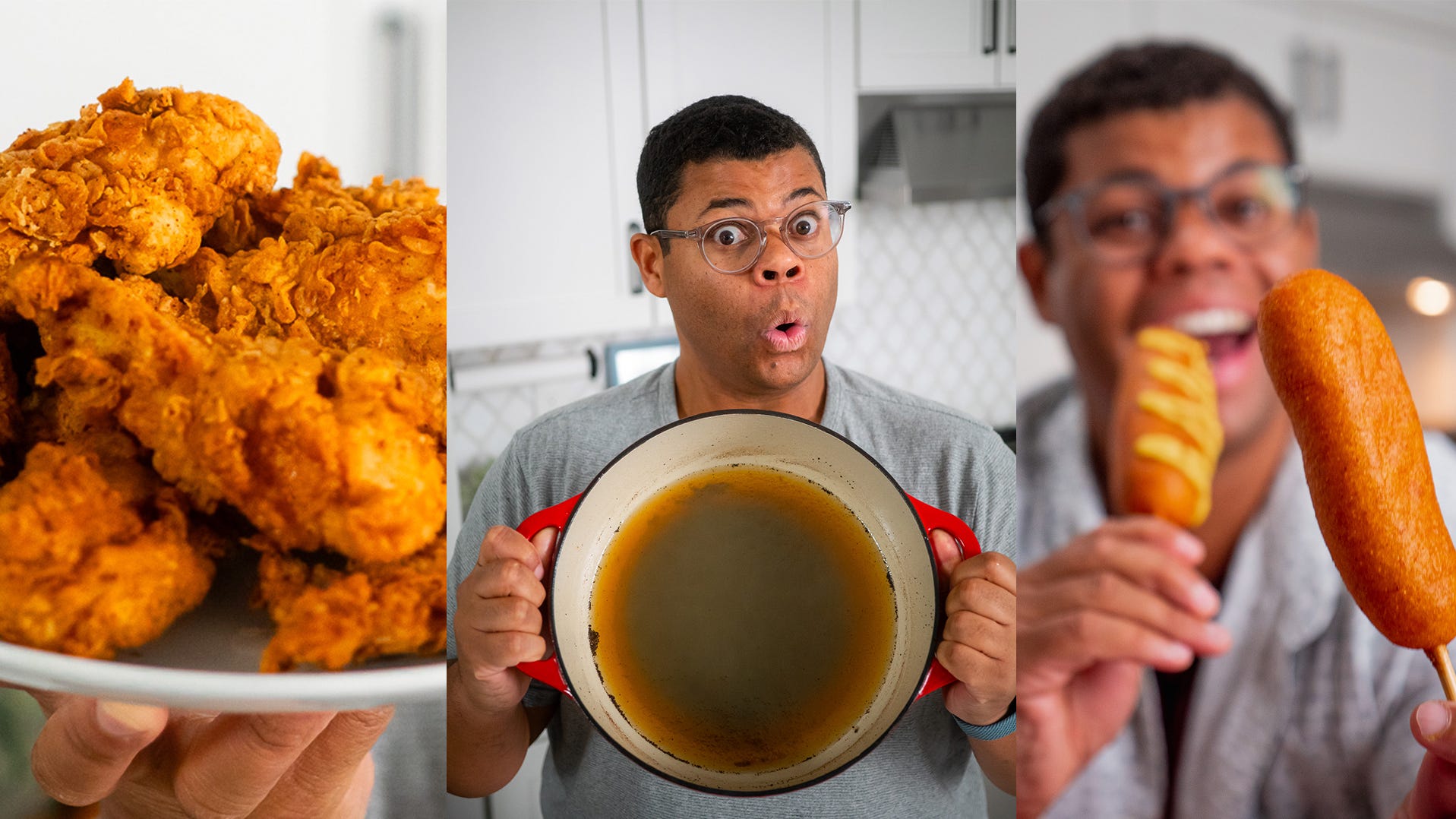Vintage casserole dishes listed for thousands. Here's why.

The glass casserole containers that became staples in mothers' and grandmothers' kitchens decades ago are making a comeback.
The iconic yet durable crockery has become something of a collectible in recent years, akin to baseball cards or coins, appearing on third-party resell websites like the ghost of a holiday past.
Bella Bucchiotti, a food and lifestyle content creator, told the Associated Press, that Pyrex, a brand developed Corning Glass Works during the 20th century, was "more than cookware; it was practically part of the family."
"My mom's thrifted treasures, especially her prized Snowflake Blue casserole dish, always showed up at birthdays and holidays, each with its own backstory, and those colorful dishes still remind me of the laughter around the table," Bucchiotti said.
According to the Henry Ford Musuem, Pyrex, Corning Ware and Corelle —all Corning Glass Works brands "became household names that revolutionized American kitchens and endured decades of changing consumer tastes and expectations.
While it is not surprising that the beloved dish would once again surge in popularity, given its quality and retro look, the price tag for the intricate casserole dishes sure is.
One "La Marjolaine" dish, a pattern from CorningWare's 1970 "The Spice of Life" collection, is currently listed for over $88,000 on eBay as of Wednesday, June 11. The item was in four shoppers' carts, and over 200 have shown interest in the vintage dish, according to the listing reviewed by Paste BN.
The "Spice of Life" designs, which include the "La Marjolaine," like the "L’Echalote," may have been the second most-produced CorningWare Pattern; they are also one of the rarest and most valuable today, according to Valuable Antique Detector.
"The 'Spice of Life' casseroles are among the few CorningWare patterns that’ll fetch you four figures today," Valuable Antique Detector reports.
Pyrex, CorningWare crockery are similar, but different
While the three brands — Pyrex, CorningWare and Corelle — were all developed and initially manufactured by the same company, they all fulfilled different consumer needs. Specifically, in terms of temperature threshold. The "ingredients" used to make the products marketed for those respective brands were different, too.
Pyrex products were initially manufactured with borosilicate glass, a temperature-resistant material used for industrial products like railroad lanterns and batter jars, before the company shifted to making its cookware with tempered soda-lime glass.
Research done by Pyrex collector Dianne Williams notes that over 150 different glass compositions have been used for Pyrex branded products since 1915, including different formulations of borosilicate, aluminosilicate, and heat- and air- tempered soda-lime glass, according to the Corning Museum of Glass.
Pyrex’s sister brand, CorningWare, previously Corning Ware, was made from Pyroceram, a glass-ceramic material discovered by a research chemist in 1952. The brand has ventured into making their products with other materials, namely stoneware and porcelain.
“The gleaming white opaque material could withstand extreme cold and heat and didn’t break when dropped, the Henry Ford Museum reports. “First used in nose cones for radar-guided missiles, this new material found its way into the kitchen in 1958 as Corning Ware — a line of innovative, shatterproof cookware that could go right from the freezer to the oven or range and then to the table as a serving dish.”
The materials used to make newer version of these branded products, i.e., stoneware/porcelain and soda-lime glass, are generally not as resistant to thermal shock as the materials that were previously used to manufacture the OG products.
Those who purchase new or vintage products from either of these brands should check the product label before use.
“Durable, convenient and stylish, the iconic brands developed by Corning in the 20th century continue to have relevance in today’s kitchens,” according to the Henry Ford Museum.
Some of the listings we've reviewed have both Pyrex and CorningWare in the title. Additional variations include CorningWare dish with Pyrex glass lid.
Vintage casserole dish prices vary; many sell for less than $100
While it's unlikely that a consumer would buy a casserole dish or a set of casserole dishes from CorningWare's "Spice of Life" collection for over $1,000, other listings are priced similarly.
For example, a casserole dish with a "L’Echalote La Marjolaine," another CorningWare "Spice of Life" design and inscription, complete with a glass lid, which as of June 11 is listed for $25,000. Or the $9,000 CorningWare "Blue Cornflower" dish from 1958.
The price range for the dishes, at least on eBay, is anywhere from $10 to over $80,000.
Though consumers likely keep the nostalgia and rarity of the crockery in mind when browsing, very few purchase vintage CorningWare or Pyrex plates, sets, cups or lids for more than a couple of hundred bucks.
This story has been updated to fix an inaccuracy and add new information.